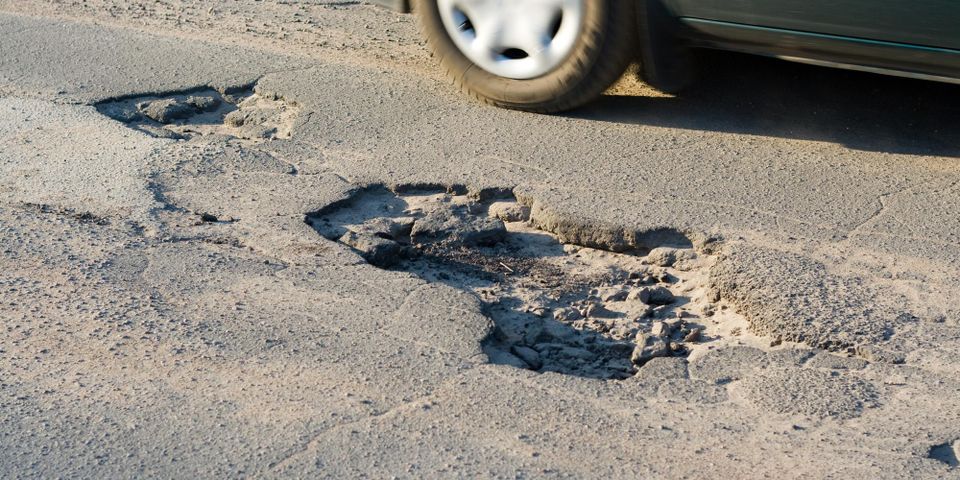
Nothing disrupts a smooth ride like hitting a pothole. Ranging in size from quarters to craters, they can do more than give you a surprising jolt. When your car hits broken asphalt, it can damage the wheel, drive train, suspension, or chassis. Here’s how potholes form and how to fix them.
What You Need to Know About Potholes
How Potholes Form
Potholes generally aren’t caused by vehicle accidents or other extreme impacts like many people think. They’re actually caused by water seeping into the road surface through fissures, seams in concrete, and other imperfections. As water collects, temperatures begin to affect the volume of subsurface space occupied by the fluid.
 The water expands when it freezes in winter. As temperatures warm, ice melts and contracts from the void. Like a balloon deflating within the non-pliable road material, the changing volume weakens and cracks the surrounding asphalt over time. Soon, all it takes is a vehicle rolling over the weakened area to collapse it, forming a pothole.
The water expands when it freezes in winter. As temperatures warm, ice melts and contracts from the void. Like a balloon deflating within the non-pliable road material, the changing volume weakens and cracks the surrounding asphalt over time. Soon, all it takes is a vehicle rolling over the weakened area to collapse it, forming a pothole.
How to Fix a Pothole
Repairing potholes involves patching them with fresh, strong material. First, the pothole is cleaned to accept the patch. The work requires removing all the loose debris that can interfere with properly setting the mix.
Next, the area of the pothole is heated. The warming process makes the existing asphalt pliable. Now, it can be more easily reshaped and better accept the mix. Finally, new material is poured into the hole and tamped to remove pockets and moisture. After cooling, the road surface is stronger than new.
Strong, lasting pothole repairs are best accomplished by proven paving experts. In Kalispell, MT, and across the Flathead Valley, PaveCo has been trusted to provide quality asphalt repairs, sealcoating, and new driveways for more than 20 years. Their team utilizes the latest innovations to get the best results. Call (406) 752-0051 today to schedule a convenient, free estimate.
About the Business
(7 reviews)
Have a question? Ask the experts!
Send your question

